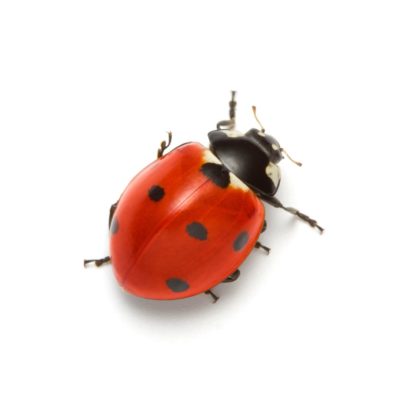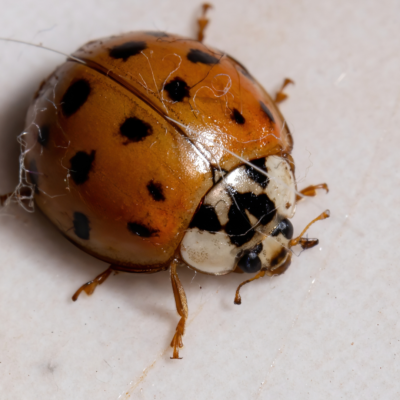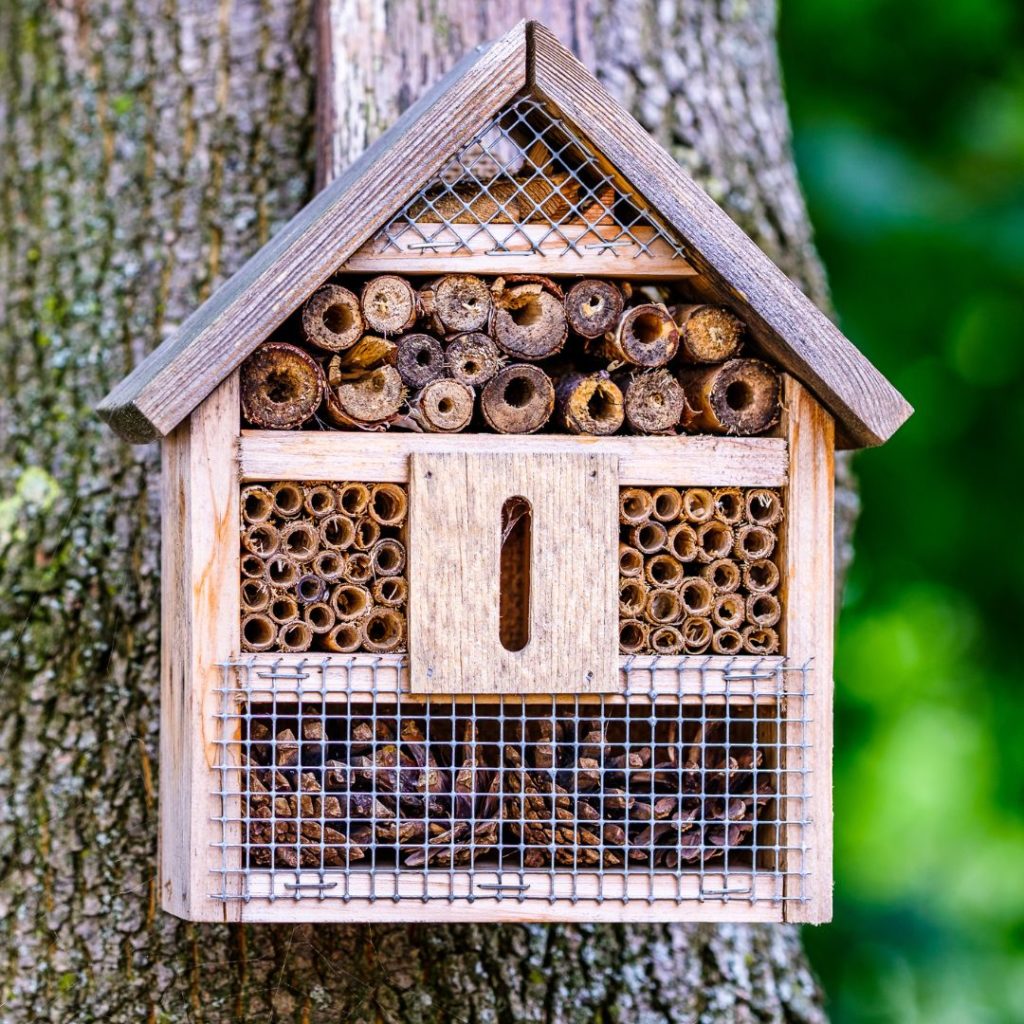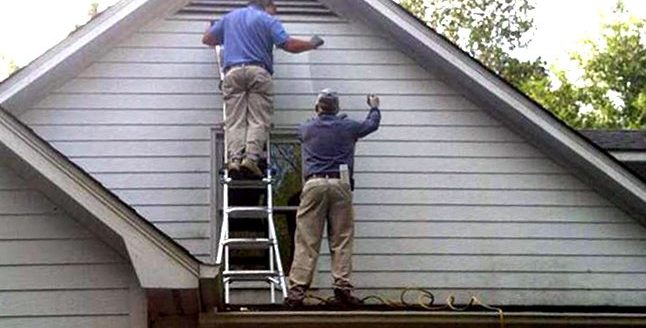Charlotte Ladybug Infestations: Causes, Prevention & Removal
Ladybugs are thought to be omens of good luck, likely because they prey on aphids and other plant-eating pests. But what happens when these cute critters move from your backyard to your living room, invading your home in droves?
When a large number of ladybugs take up residence in your house, it’s considered a ladybug infestation. This commonly happens in winter, when temperatures begin to drop.
Desperate for a warm place to ride out the cooler months, these insects will crawl through door jambs, window panes, and other small crevices in your house. Though their presence isn’t exactly dangerous, it can be a serious nuisance.
In this blog, we offer more insight into what causes ladybug infestations in North Carolina. We also discuss tactics for prevention and removal.
Contents
- What Causes Ladybug Infestations?
- Signs of a Ladybug Infestation
- Ladybugs vs. Asian Lady Beetles: How To Tell the Difference
- How To Keep Ladybugs Out of Your Home
- How To Address a Ladybug Infestation
What Causes Ladybug Infestations?
Ladybugs typically escape cold temperatures by hibernating in rock crevices, tree bark, and leaf litter until early spring.
But in more urban areas, houses become an attractive alternative.
Seeking a warm spot to spend the winter, the beetles wriggle through crevices in the home, including:
- Broken window screens
- Window panes
- Door jams
- Siding crevices
- Cracked foundations
Once inside, the ladybugs release pheromones, a chemical that attracts ladybugs within a two-mile radius of your home. This can cause an infestation.
Ladybug Infestation Risk Factors
Your home may be more prone to a ladybug infestation if:
- It’s older. If your home is older, it’s likely to have cracks and holes from decades of natural settling. These openings allow ladybugs – as well as other pests – to enter your house.
- It’s painted a bright color. Ladybugs are attracted to lighter colors. That means if your home is white, beige, or yellow, ladybugs may be more likely to take up residence.
- It faces the south. When winter temperatures dip, ladybugs crave warmth. Since south-facing homes get the most sunlight, beetles tend to gravitate toward these properties.
- It’s near a field or forest. Homes bordered by woods or pastures are more likely to experience ladybug infestations. Homes with natural wood siding are also at risk.
- You’ve experienced an infestation before. When ladybugs find a good hibernating spot, they release pheromones to attract them back to the site. So, unless you take preventative action, you can expect an infestation year after year.
When Is Ladybug Infestation Season in North Carolina?
Ladybugs will typically seek out shelter when the weather gets cooler. In North Carolina, this is sometime between late October and early March.
Signs of a Ladybug Infestation
Encountering a couple of ladybugs in your house may not be cause for concern.
However, if you see a large group of ladybugs in your home, you’re likely experiencing an infestation. A swarm normally ranges from 100 to 15,000 critters.
Though ladybugs start hibernating in the winter, homeowners typically don’t notice these infestations until early spring.
When the weather warms, ladybugs begin crawling and flying around, searching for a way outside. This awakening period can last anywhere from days to weeks.
More subtle signs of a ladybug infestation include:
- Yellow-colored secretions. Luckily, ladybugs do not feast on building materials such as wood flooring and carpets. However, they do secrete a yellow fluid called hemolymph. This substance stains carpets, walls, and drapes. You may notice large amounts of it on south-facing windows and windowsills.
- A noxious odor. The hemolymph secreted by ladybugs can smell moldy, almost like dirt or potatoes. Unfortunately, this unpleasant scent can linger for five to six months after the beetles vacate your home.
Ladybugs vs. Asian Lady Beetles: How To Tell the Difference
When looking for signs of a ladybug infestation, many homeowners confuse ladybugs with their more aggressive doppelganger: Asian lady beetles.
Though the two insects look very similar, there are some important distinctions.
Key Differences Between Ladybugs and Asian Lady Beetles

Ladybugs
- Color: Bright red with small, black dots and white markings on the cheeks
- Size: Slightly smaller
- Shape: Round
- Behavior: Relatively docile, but will secrete hemolymph if threatened
- Poisonous: No
Asian Lady Beetles
- Color: Deep orange with more white on the cheeks
- Size: Slightly larger, growing to lengths of 7 mm
- Shape: Oval shape
- Identify Characteristics: Distinct, white-colored “M” located behind the beetles head
- Behavior: Aggressive, will bite
- Poisonous: Potentially poisonous to dogs

Are Ladybugs Dangerous?
Ladybugs are relatively harmless and aren’t known to carry disease. However, a large infestation can cause an allergic reaction.
Signs of an allergic reaction to ladybugs include:
- Red and itchy eyes
- Coughing
- Hives
- Wheezing
- Itchy skin
Are Asian Lady Beetles Dangerous?
Comparatively, Asian lady beetles are aggressive and can bite if they land on you. These insects are also potentially poisonous to dogs.
If a dog eats an Asian lady beetle, the chemicals released by the bug can burn the animal’s mouth and digestive tract. These burns can affect the dog’s appetite and may require medical intervention.
How To Keep Ladybugs Out of Your Home
The best way to avoid spending the winter with a swarm of ladybugs is by taking preventative action.
Here are some things you can do to keep ladybugs out of your home:

Plant Mums
Mums are flowers that contain a chemical that wards off ladybugs. To keep these insects away, plant mums just outside your home at entry points. Lavender, cloves, and bay leaves can also repel ladybugs.
Use Citronella
Citronella can remove the ladybugs’ pheromones from your home and prevent a swarm. Simply combine 10 to 15 drops of citronella essential oil with 1 cup of water. Then, spray entry points throughout your home.


Create Ladybug House
You can encourage ladybugs to stay outdoors by building ladybug houses. These structures provide natural hiding places where ladybugs can spend the winter or lay their eggs.
However, keep in mind that many ladybug houses end up vacant despite best efforts to attract the beetles.
Prepare for Winter
The best way to prevent a ladybug infestation is to make home repairs before winter rolls around.
Necessary repairs include:
- Caulking openings around doors and windows
- Checking window screens for holes
- Inspecting your home’s siding for gaps
- Checking your roof and foundation for visible damage
How To Address a Ladybug Infestation
Ladybugs have invaded your home despite your best efforts to prevent an infestation. What should you do?
You can apply DIY insecticides. However, improper usage of these DYI solutions can cause health issues as you are dealing with chemicals that are especially dangerous to pets and babies.
Or, you can opt for safer extermination methods. These include:
Sweeping and Vacuuming
Gathering ladybugs with a dustpan or vacuum is an easy way to remove a colony from your home.
Dish Soap
If the infestation is out of control, you can spray the colony with soapy water or leave a bowl of soapy water near where they gather.
Sticky Traps
To create a non-toxic trap, place a strip of duct tape where the ladybugs congregate. You’ll want to make sure the tape is placed sticky side up.
Diatomaceous Earth
Diatomaceous earth is a naturally occurring sedimentary rock that’s used as a natural pesticide. When sprinkled near the ladybug colony or at entry points, it causes the beetles to dry up and die.
Light Traps
Like most insects, ladybugs are attracted to light. You can use this to your advantage by creating a light trap.
Just cut a plastic bottle in half and flip the top half into the bottom to create a funnel. Then, add an LED light into the funnel. The beetles will gravitate toward the light but get caught in the trap.
Pest Control Professionals
Unfortunately, DIY solutions can be expensive, time-consuming, and ineffective.
By far, the best way to remove ladybugs from your home is to hire pest control experts. These professionals can suggest safe, non-toxic solutions while also taking action to prevent future ladybug infestations.
My Home Is Infested: Now What?
- Determine if it’s a ladybug or Asian lady beetle infestation. It’s important to know more about your house guests, especially since Asian lady beetles are aggressive and toxic to dogs.
- Create a safe and effective treatment plan. Depending on the severity of the infestation, you may choose to spray insecticides, use natural DIY solutions or call a pest control expert. Regardless, you’ll want to take steps to prepare your home for extermination.
- Get ready for next winter. Ladybugs are creatures of habit: Once they find a cozy spot to hibernate, they’ll return year after year. To stop future invasions, you must take preventative action.
Getting rid of a ladybug infestation is a challenge. Luckily, pest control experts like Carolina Pest Management can effectively remove the bugs and keep them from returning.
To learn more about our ladybug infestation removal services, Call us at 704-283-2527 today.


